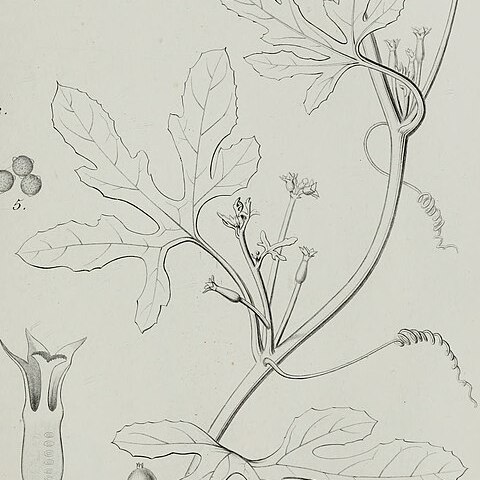Male flowers few to many in subsessile or pedunculate subcapitate to racemiform usually congested axillary clusters. Receptacle-tube campanulate; lobes small. Corolla-lobes 5, united below. Stamens 5, all 1-thecous, in 2 pairs with one single, or 3, 2 double 2-thecous, 1 single 1-thecous, the double stamens ± 2-lobed; filaments short, inserted in the mouth of the receptacle-tube; thecae short, straight, lateral.
Female flowers axillary, solitary or fasciculate; ovary smooth, glabrous or puberulous; ovules few to several, horizontal; perianth as in male flowers; staminodes, when present, 5; stigma 2(3)-lobed.
Fruits solitary or fasciculate, small, succulent, ovoid or ellipsoid, often rostrate, red, circumscissile near the persistent greenish cupuliform base.
Prostrate or usually scandent herbs; stems arising from a perennial tuberous rootstock, eventually becoming softly more or less woody at the base.
Seeds asymmetrically ovoid or pyriform, rarely subglobose, small.
Flowers small, yellowish, monoecious.
Leaves simple, petiolate.
Tendrils simple.
